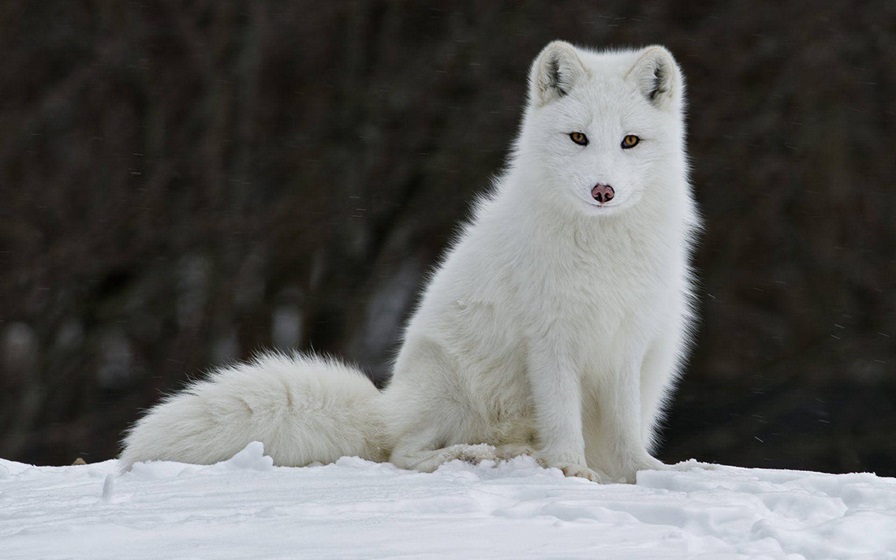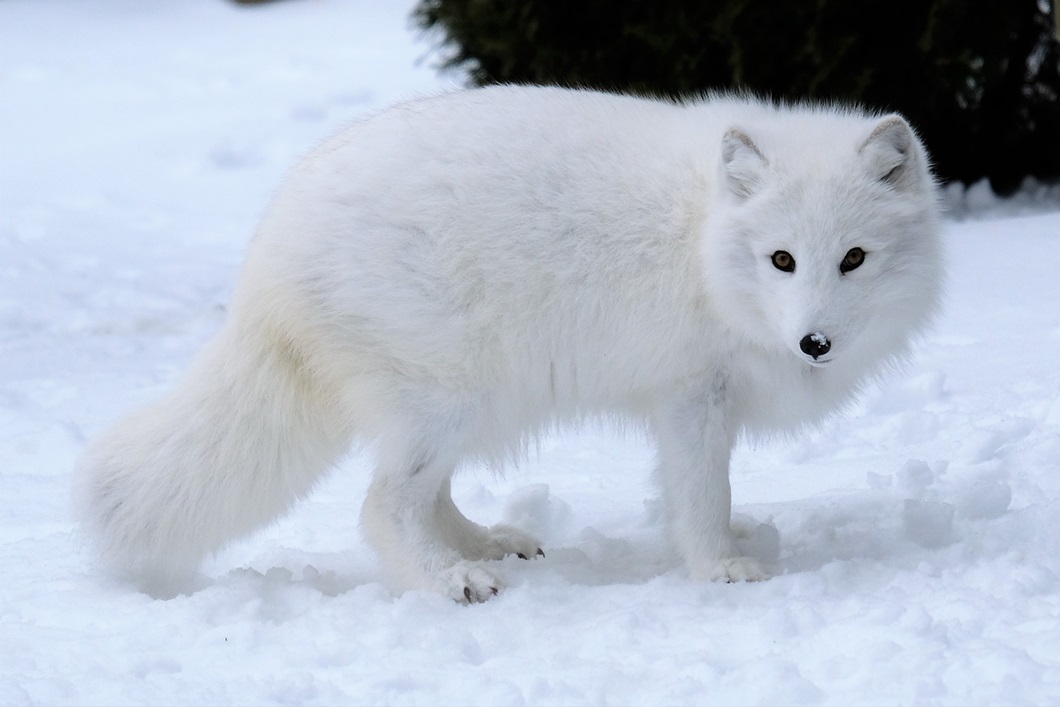What is a White Fox?
The white fox, also known as the Arctic fox, is a small but tough animal that lives in some of the coldest places on Earth. You’ll often find it in the Arctic regions of North America, Europe, and Asia. This fox is known for its pure white fur, which helps it blend in with the snowy land.
Even though it looks cute and fluffy, the white fox is a smart and skilled survivor. It can live in freezing temperatures as low as -58°F (-50°C)!
Table of Contents
What Does a White Fox Look Like?
The white fox is a small-sized animal, about the same size as a house cat. Here are some quick facts about how it looks:
- Fur: Thick, soft, and white in winter. It helps them stay warm and hide from predators.
- Size: Around 18 to 27 inches long, with a fluffy tail about 12 inches long.
- Weight: Usually between 6 to 12 pounds.
- Eyes: Sharp, with good night vision.
- Ears: Small and round, which helps stop heat from escaping.
Color Changes with Seasons
One cool thing about the white fox is that its fur changes with the seasons. In winter, the fur is white. But in summer, it turns brown or grey to match the rocks and plants. This change helps them stay hidden from other animals all year round.
Where Does the White Fox Live?
The white fox lives in tundra and coastal areas of the Arctic. These places are cold, windy, and often covered in snow and ice. Even though the weather is harsh, the white fox knows how to survive.
Countries Where White Foxes Are Found:
- Canada
- Greenland
- Russia
- Norway
- Iceland
- Alaska (USA)
These foxes usually live in underground dens or dig holes into hills or snowbanks. These dens help them stay warm and safe, especially during bad weather or when they have babies.
What Do White Foxes Eat?
White foxes are omnivores, which means they eat both meat and plants. But in the Arctic, food can be hard to find. So, they eat whatever they can get!
Common Foods:
- Lemmings (small rodents)
- Birds and bird eggs
- Fish
- Insects
- Berries and seaweed (in summer)
- Leftovers from polar bears or other animals
They have a great sense of smell and hearing, so they can find prey even under thick snow. Sometimes, they even follow polar bears to eat whatever meat is left behind.
How Do White Foxes Survive the Cold?

White foxes are built for the cold. Every part of their body helps them stay warm.
Survival Features:
- Thick fur: Keeps them warm even in freezing temperatures.
- Short legs and ears: Less surface area means less heat lost.
- Fluffy tail: Acts like a blanket when they curl up.
- Fat storage: They build up body fat in the summer to survive the winter.
They also slow down their activity during storms or when it’s too cold, saving energy and body heat.
Family Life of White Foxes
White foxes are known to be loyal partners. They usually stay with one mate for life.
Baby Foxes (Kits):
- Female foxes give birth to 5 to 14 kits in spring.
- The kits are born in underground dens.
- Both parents help feed and protect the babies.
- The babies grow fast and leave the den after about 4 weeks.
The parents often return to the same den every year, and some dens are used for generations.
Why Are White Foxes Important?
White foxes play a big role in the Arctic food chain. They help keep the number of small animals like lemmings in balance. They are also food for larger animals, like wolves and polar bears.
This balance keeps the Arctic ecosystem healthy.
White Fox in Culture and Stories
The white fox has been a symbol in many cultures, especially in places where it lives.
Examples:
- In Inuit stories, the fox is clever and sometimes a trickster.
- In Japanese mythology, a white fox (kitsune) is seen as a magical creature.
- In popular media, white foxes are often shown as mysterious and beautiful animals.
People are often amazed by the white fox’s beauty and clever nature, and it appears in art, books, and even cartoons.
Threats to the White Fox
Even though the white fox is strong, it still faces many dangers.
Main Threats:
- Climate Change: As the Arctic melts, white foxes lose their natural home.
- Red Fox Invasion: Warmer weather brings red foxes into the Arctic, and they compete for food and space.
- Hunting: In some places, white foxes are hunted for their fur.
- Food Shortage: If prey animals like lemmings are low, foxes may starve.
Conservation Status
Right now, the white fox is not endangered. But scientists are watching closely because of the changing climate. In some areas, they are protected by law, and people are working to save their icy homes.
Fun Facts About White Foxes
Let’s check out some fun and surprising facts:
- A white fox can smell a lemming under 3 feet of snow!
- They can travel up to 100 miles in search of food.
- Their paws are covered in fur, like built-in snow boots.
- White foxes are also great swimmers.
- Some foxes live in the same den for over 100 years (passed down by generations).
Can You Keep a White Fox as a Pet?
While they may look cute and cuddly, white foxes are wild animals. They need lots of space, special diets, and cold weather to stay healthy. Keeping one as a pet is not a good idea and is illegal in many places.
If you love white foxes, it’s best to support wildlife organizations or adopt a fox symbolically through a conservation group.
How Can We Help White Foxes?
Even though we may live far from the Arctic, we can still help white foxes in small ways.
Here’s What You Can Do:
- Save energy: Use less electricity to fight climate change.
- Support wildlife groups: Donate or share their messages.
- Spread the word: Tell others about the white fox and why it matters.
- Avoid buying fur: Choose animal-free clothing.
These small steps can help protect not just white foxes but many other Arctic animals too.
Conclusion
The white fox is one of the Arctic’s most amazing animals. From its snowy fur to its smart survival skills, it shows us how life can thrive even in the toughest places. While it may face many threats, there’s still hope—especially if we all do our part.










